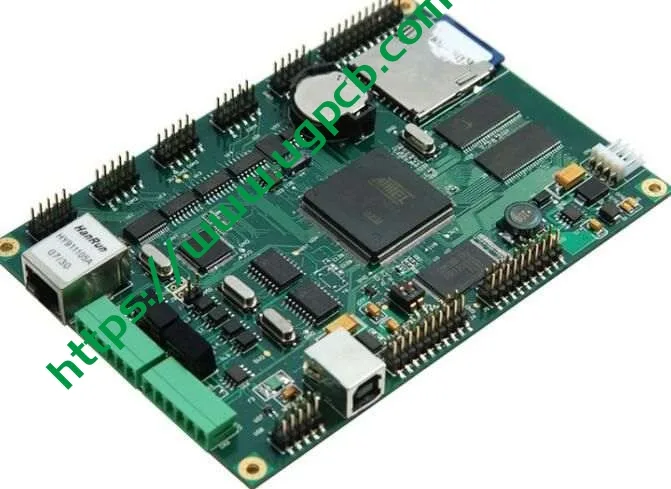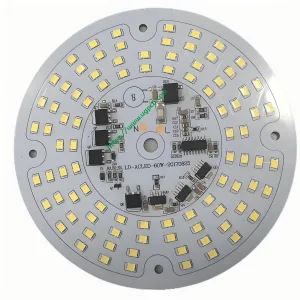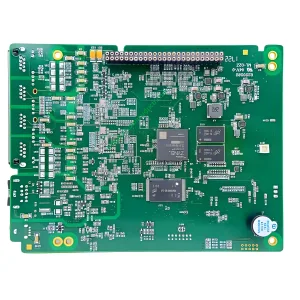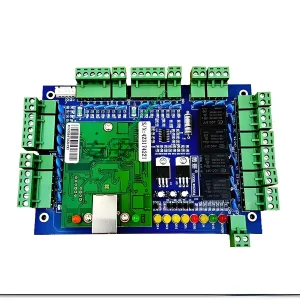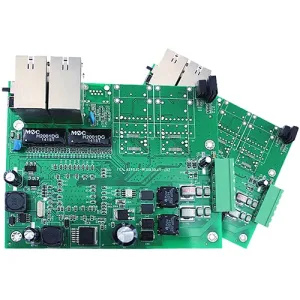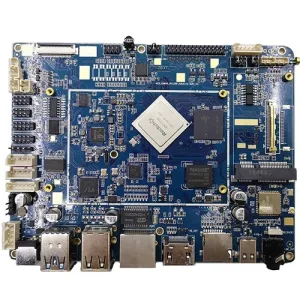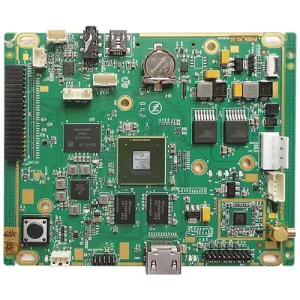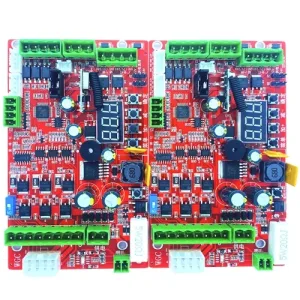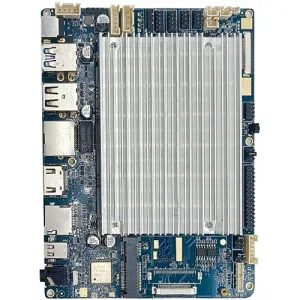Industrial control refers to industrial automation control, which is mainly achieved through the combination of electronics, machinery and software. That is industrial control, or factory automation control. It mainly refers to the use of computer technology, microelectronics technology, and electrical means to make the factory’s production and manufacturing process more automated, efficient, precise, controllable and visual.
The role of industrial control
The emergence and promotion of industrial control technology has brought about the third industrial revolution, which has increased the production speed and efficiency of factories by more than 300%. In the early 1980s, with the spring breeze of reform and opening up, foreign advanced industrial control technology entered mainland China, and widely used industrial control products include “PLC, inverter, servo motor, industrial control computer” and so on. These products and technologies have strongly promoted the automation process of China’s manufacturing industry and made great contributions to China’s modernization.
The main core areas of industrial control have irreplaceable advantages in large power plants, การบินและอวกาศ, dam construction, industrial temperature control heating, ceramics, ฯลฯ.
ตัวอย่างเช่น, real-time monitoring of power grids requires the collection of a large amount of data values and comprehensive processing. The intervention of industrial control technology provides convenience for the processing of a large amount of information.
The emergence of industrial control has improved the safety and precision of the manufacturing and construction industries, and solved the original industrial needs such as temperature, ความดัน, gas flow, and liquid flow. The work that originally required semi-automation and manual labor has evolved into automation, including common air switches, pressure transmitters, flow meters, ฯลฯ.
Working principle of industrial control: ตัวอย่างเช่น, the power control of the air switch, when the power of the electrical appliance is too large, the internal mechanical principle begins to operate, and the switch automatically disconnects, thereby ensuring the safety of the use of electricity in industry or buildings, and accurately finding the source of the short circuit.
Industrial control computer
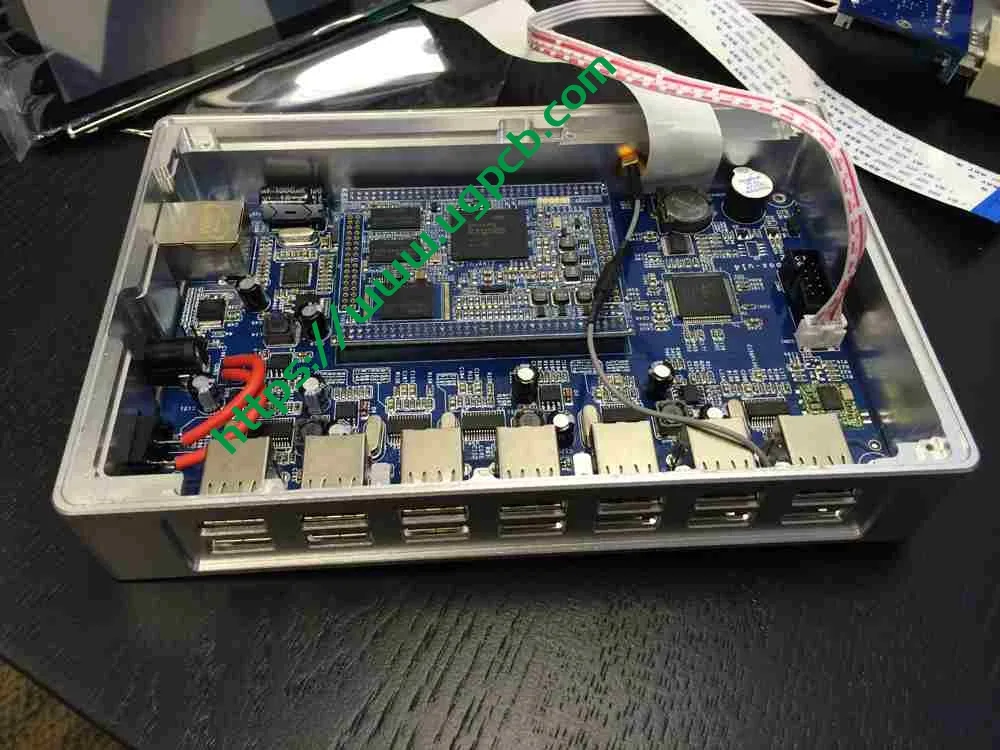
Industrial control computer is a general term for tools that use bus structure to detect and control the production process and its electromechanical equipment and process equipment. It has important computer attributes and characteristics, เช่น: computer CPU, hard disk, memory, peripherals and interfaces, real-time operating system, control network and protocol, computing power, friendly human-computer interface, ฯลฯ. The main components of industrial computers are five categories: IPC (PC bus industrial computer), PLC (programmable control system), DCS (distributed control system), FCS (fieldbus system) and CNC (numerical control system).
การพัฒนา
Industrial control has always been a bottleneck restricting my country’s equipment industry and even product upgrades. Equipment manufacturing is the core and foundation of industry, which determines a country’s industrial level and technological level, and also determines its position in the global division of labor.
For industrial hosts such as machine tools, as domestic manufacturers, Siemens or Mitsubishi is needed to provide overall motion control solutions. Core motion control products such as linear motors, AC servo motors and systems are core components or application solutions for precision motion control provided by foreign multinational companies as a whole. From products to technologies, they are designed by foreign companies. Domestic manufacturers engaged in machine tool manufacturing understand the role of these key components from the perspective of application and how to use them more, and finally integrate them into a set of mechanical equipment. This is the gap in the manufacturing industry and the direction of catching up.
All-steel chassis
The IPC all-steel chassis is designed according to standards, resistant to impact, vibration, and electromagnetic interference, and a passive backplane compatible with PC-bus can be installed inside.
Passive backplane
The slots of the passive backplane are composed of bus expansion slots. The bus expansion slot can be composed of multiple slots according to the actual application of the user, which is used to expand the ISA bus, PCI bus, บัส PCI-E, and PCIMG bus. There are requirements for combination and matching for various bus versions. ตัวอย่างเช่น, the PCIMG1.3 version bus does not provide ISA bus support. The circuit board has a four-layer structure, with the middle two layers being the ground layer and the power layer. This structure can weaken the logic signals on the circuit board. Mutual interference and lower source impedance. The backplane can be plugged with various boards, including CPU cards, display cards, control cards, I/O cards, ฯลฯ.
Industrial power supply
ในยุคแรก ๆ, industrial computers based on Intel Pentium processors mainly used AT switching power supplies, and like PCs, they mainly used ATX power supplies, with an average trouble-free operation time of 250,000 ชั่วโมง.
CPU processor
There are many types of industrial computer CPU cards, which can be divided into long cards and half-length cards according to size. Most of them use desktop system processors, such as 386\486\586\PIII in the early days, and now the mainstream is P4, Core and other processors, and motherboard users can freely choose according to their needs. Its main features are: operating temperature 0-60℃; with hardware “watchdog” timer; some CPU cards that require low power consumption also use embedded series CPUs.
Other accessories
Other accessories of industrial computers are basically compatible with PCs, mainly including CPU, memory, graphics card, hard disk, floppy drive, keyboard, mouse, optical drive, เฝ้าสังเกต, ฯลฯ. The standard length of industrial computer chassis is 19 inches and the height is 4U.
Applicable fields
IPC has been widely used in all aspects of industry and people’s lives. ตัวอย่างเช่น: control sites, road and bridge control toll systems, อุปกรณ์การแพทย์, environmental monitoring, communication guarantee, intelligent traffic control systems, building monitoring and security, voice call centers, queuing machines, POS counter cash registers, CNC machine tools, fuel dispensers, financial information processing, petrochemical data collection and processing, geophysical exploration, field portable operations, environmental protection, military industry, electricity, railways, highways, การบินและอวกาศ, subways, intelligent buildings, outdoor advertising, ฯลฯ.
คุณสมบัติ
In layman’s terms, industrial computers are computers designed specifically for industrial sites, and industrial sites generally have strong vibrations, a lot of dust, and large electromagnetic field interference. โดยทั่วไป, factories are in continuous operation, นั่นคือ, there is generally no rest for a year. ดังนั้น, compared with ordinary computers, industrial computers must have the following characteristics:
① The chassis adopts steel structure, which has high anti-magnetic, dust-proof and impact resistance.
② There is a dedicated backplane in the chassis, and there are PCI and ISA slots on the backplane.
③ There is a dedicated power supply in the chassis, and the power supply has strong anti-interference ability.
④ It is required to have the ability to work continuously for a long time.
⑤ Generally, a standard chassis that is easy to install is used (4U standard chassis is more common) บันทึก: Except for the above characteristics, the rest are basically the same. นอกจากนี้, due to the above professional characteristics, the price of industrial computers of the same level is more expensive than ordinary computers, but generally the difference is not big.
Disadvantages of industrial computers Although industrial computers have unique advantages compared with ordinary commercial computers, their disadvantages are also very obvious-poor data processing capabilities, as follows:
① The hard disk capacity is small;
② Low data security;
③ Small storage selectivity.
④ High price.
Programmable Controller
Detailed Introduction
The English name of programmable logic controller is Programmable LogIC Controller, which was called PC in the 1970s and 1980s. Since the development of personal computers in the 1990s, it has also been referred to as PLC; and the concept of programmable programming covers too much scope, so the American AB company first named the programmable controller as programmable logic controller (PLC-PLC). (Programmable Logic Controller), for convenience, PLC is still referred to as programmable controller. Some people call the system composed of programmable controllers PCS programmable control system, emphasizing that the programmable controller manufacturer provides people with a complete system.
Market Outlook
The history of PLC development
ใน 1968, General Motors proposed to replace the relay control device. The following year, American Digital Corporation developed the first generation of programmable controllers to meet the requirements of General Motors assembly lines. With the development of integrated circuit technology and computer technology, the fifth generation of PLC products has appeared.
In manufacturing industries characterized by changes in geometric shapes and mechanical properties and process industries characterized by physical and chemical changes that transform raw materials into products, in addition to feedback control based on continuous quantities, especially in manufacturing, there is also open-loop sequential control based on a large number of switches, which executes sequential actions according to logical conditions; นอกจากนี้, there is control of interlocking protection actions that are not related to sequence and timing according to logical relationships; as well as a large number of discrete quantity data acquisition and monitoring based on state quantities such as switch quantities, pulse quantities, timing, counters, and analog quantity over-limit alarms. Due to these control and monitoring requirements, PLC has developed into a product that replaces relay circuits and performs sequential control. In many years of production practice, PLC, DCS, and IPC have gradually formed a three-legged situation, as shown in Table 1, and other single-loop intelligent regulators have occupied a certain market share.
The 1980s to the mid-1990s was the fastest growing period for PLC, with an annual growth rate of 30-40%. Due to the improvement of PLC machine contact processing simulation capabilities and network functions, it has squeezed out a part of the DCS market (process control) and gradually monopolized industries such as sewage treatment. อย่างไรก็ตาม, due to the emergence of industrial PC (IPC), especially the development of fieldbus technology, IPC and FCS also squeezed out part of the PLC market, so the growth rate of PLC generally slowed down. There are more than 200 manufacturers in the world producing more than 300 varieties of PLC products, mainly used in automobile (23%), food processing (16.4%), chemical/pharmaceutical (14.6%), metal/mining (11.5%), pulp/paper (11.3%) %) and other industries.
PLC market situation
There are about 30 domestic PLC manufacturers, but they have not yet formed large-scale production capacity and famous brand products. Some products are produced by imitation, assembly of incoming materials or “OEM”. ดังนั้น, it can be said that PLC has not yet formed a manufacturing industry in my country. As a product that has no cutting-edge technical difficulty in principle, technology and process, as long as we work hard, we can form a manufacturing industry.
In terms of PLC application, my country is very active. เกี่ยวกับ 100,000 sets of new PLC products are invested each year, with an annual sales volume of 3 billion yuan, and the application industry is also very wide. อย่างไรก็ตาม, compared with other countries, more investment is needed in the application of mechanical processing and production lines.
PLC has huge market potential, not only in my country, but even in industrially developed Japan, surveys show that the proportion of mechatronic products supporting PLC has reached 42%, of which 24% are controlled by relays and contactors. ดังนั้น, there are still many occasions where PLC needs to be applied, especially in my country.
From the perspective of technological innovation, large and medium-sized enterprises in my country should vigorously develop CIMS (computer integrated manufacturing system) and form FMS flexible manufacturing system in machinery manufacturing plants. PLC is the foundation, so the PLC market is vast.
PLC has the advantages of stability and reliability, low price, complete functions, flexible and convenient application, and convenient operation and maintenance. This is the fundamental reason why it can occupy the market for a long time. Below we will focus on several issues and study its development trend.
Hardware Software
Classification of PLC
PLC formed micro, small, ปานกลาง, large and giant PLC in the 1990s. According to the number of I/O points, it can be divided into:
l Micro PLC: 32 I/O
l Small PLC: 256 I/O
l Medium PLC: 1024 I/O
l Large PLC: 4096 I/O
l Giant PLC: 8195 I/O
Large systems that support 300 loops and 65,000 I/O points on a single machine correspond to medium-sized and above PLCs, all of which use 16-32-bit CPUs. Micro and small PLCs initially used 8-bit CPUs. According to communication requirements, some also use 16-bit CPUs. Bit ~ 32-bit CPUs. Since the sales of PLCs with I/O points below 64 points account for 47% of the total PLC sales, and those with 64 ถึง 256 points account for 31%, which together account for 78% of the total PLC sales, more research should be done on micro and small PLCs.
PLC hardware
The hardware of the PLC controller itself adopts a building block structure, and the product structures of various manufacturers are similar. Take Japan’s Omron C200HE as an example. It is a bus template frame structure. The CPU template is installed on the basic frame (CPU motherboard), and the I/O template is installed on other slots. If there are many I/O templates, the CPU motherboard can be connected to the I/O expansion motherboard through the I/O expansion line, and the I/O template is installed on it. Another method is to equip it with a remote I/O slave station, ฯลฯ. All these show that PLC manufacturers develop all hardware components for users, making it convenient for users to choose and configure PLCs of different sizes. นอกจากนี้, the openness of this hardware configuration provides huge benefits for manufacturers, distributors (ตัวแทน) and system integrators. It brings a lot of convenience to end users and also brings great convenience to the marketing supply chain. This is a good success experience.
In addition to the general DI/DO and AD/DA templates, the I/O templates in PLC have also developed a series of I/O templates with special functions, which have opened the way for the application of PLC in various industries, such as barcode ASCII/BASIC templates for identification, PID templates for feedback control, high-speed counting templates for operation control and processing, single-axis position control templates, dual-axis position control templates, cam positioner templates, radio frequency identification interface templates, ฯลฯ, which will be greatly developed in the future. นอกจากนี้, the input and output related components, input and output electrical isolation, and ground isolation under strong interference will be more perfect.
The CPU in the PLC cooperates with the memory to complete the control function. It is different from the DCS system that processes parameters such as temperature, pressure and flow. It adopts a faster patrol scanning cycle, generally 0.1~0.2s, and the faster scanning cycle is less than 50ms. It is a digital sampling control system.
PLC software
In order to complete the control strategy, in order to replace the relay, so that the user can complete the control system ladder diagram similar to the relay circuit, there is a set of control algorithm function blocks (or subroutines), called instruction systems. Compiled in the memory ROM. Users can call it when compiling the application. The instruction system can be roughly divided into two categories, namely basic instructions and extended instructions. The general PLC instruction system includes: basic instructions, timer/counter instructions, shift instructions, transfer instructions, comparison instructions, conversion instructions, BCD operation instructions, binary operation instructions, increment/decrement instructions, logic operation instructions, special operation instructions, ฯลฯ. Most of these instructions are similar to assembly language. นอกจากนี้, PLC has also improved sufficient internal resources such as timers, counters, internal relays, registers and storage areas, which brings great convenience to programming.
Programming language
IEC61131-3
Due to the differences in the instruction systems of PLC manufacturers’ products and the different requirements of users for programming methods, IEC has formulated the Windows-based programming language standard IEC61131-3 (IEC promulgated the international standard IEC1131 1993 for programmable controllers in 2007), which stipulates five programming languages: instruction list (IL), ladder diagram (LD), sequential function chart (SFC), function block diagram (FBD) and structured text (ST). This includes textual programming (IL, ST) and graphical programming (LD, FBD), and SFC can be used for both types of programming languages.
IEC Technical Committee (TC65) came to develop
IEC61499 project to expand IEC61131-3,
This is a standard for modular distributed system architecture interconnected by communication network, and will improve IEC61131-3. This is a high-level standardization document for the openness of programmable logic control equipment based on digital technology, and it is a major trend in the development of PLC.
Development trend
One or several PLCs and PCs are connected to the system, and the PC plays the role of the original programmer and human-machine interface operation station. This is a new trend in the 1990s, which brings business opportunities for system integration. ในเวลาเดียวกัน, programming software and human-machine interface software (monitoring software or configuration software) and software interface (or driver software) are also developed.
PLC manufacturers gradually add various communication interfaces on the basis of providing physical layer RS232/422/485 interface on the original CPU template to provide a complete communication network. Due to the rapid development of data communication technology, users have strong requirements for openness, and fieldbus technology and Ethernet technology are also developing synchronously, so the openness of the PCS system composed of PLC is slightly better than DCS. Rockwell AB has formed a multi-layer structure system, namely Ether Net, Control Net, Device Net and Asi and other fieldbuses (the original DH+ network is also compatible). In addition to the Profibus-DP communication network and the Profibus-FMS network, Siemens also proposed the S7 routing network, which is a two-layer structure of Profibus-DP and Industrial Enternet. The network is still developing, and the country should actively invest in it.
ใน 2001, my country’s machinery industry became a new highlight of industrial development. The total output value increased by 17.15% over the previous year. The automobile production ranked among the top ten in the world, and the machine tool production ranked fifth in the world. The profit of the machinery industry increased by 33.35%, accounting for more than 60% of the new profit of the whole industry. Exports also showed an encouraging growth. The machinery industry proposed to implement networking. For this, PLC practitioners should have a clear understanding, especially pay attention to the openness of the network, the performance-price ratio of the network, the reliability, security and advancement of the network. .
The upward connection of the network is an Internet problem, and the downward connection is a fieldbus problem. นอกจากนี้, whether the existing network can adopt the Ethernet “electronic network to the end” วิธี, the network adopts the client/server method, the browser/server method, the producer/consumer method, and the interface software adopts the OPC method. These issues need to be solved and further implemented. PLC is connected to the intelligent MCC motor control center, NC/CNC numerical control equipment for CNC machine tools and other operation control systems, electronic control equipment, frequency converters, soft starters, ฯลฯ. to form a system; PLC must cooperate with DCS as a DCS remote I/O station, ฯลฯ; PLC must work with IPC. In addition to using industrial computers as human-machine interfaces, it is also feasible to use the I/O components of software PLC; นอกจากนี้, the relationship between PLC and emergency shutdown safety systems (ESD, Emergency Shut Down Systems), stereoscopic warehouses, robots, CAD/CAM, ฯลฯ. must also be handled well. ในระยะสั้น, PLC must be compatible with various new technologies to make PLC a real “คอมพิวเตอร์”.
PLC has a wide range of applications, and there are still many areas to be explored, such as customs transit vehicle certification (Shenzhen Yantian), my country’s drug vending (many Chinese medicine stores), ฯลฯ. นอกจากนี้, PLC can also be used in discrete event systems, such as highway network traffic flow (vehicle counting, passenger counting, dwell time measurement), logistics systems, flexible manufacturing systems (agile manufacturing systems) and all non-standard follow-up service systems. , and then model and take countermeasures and optimization. The future of PLC is bright, and all pessimistic arguments are untenable. As for technological progress, it will take some time for PLC to merge with other technologies and disappear!
Intelligence
ภาพรวม
It is well known that since the 1960s, Western countries have relied on technological progress (i.e., new equipment, new technologies, and computer applications) to transform traditional industries, leading to rapid industrial development. The biggest change in the world at the end of the 20th century was the formation of the global market. The global market has led to unprecedented fierce competition, prompting companies to speed up the time to market of new products, improve quality, reduce costs, and improve service systems. This is the T.Q.C.S. of the enterprise.
Although the computer integrated manufacturing system (CIMS) combines information integration and system integration, it pursues a more perfect T.Q.C.S, enabling enterprises to achieve “delivering the right information to the right people at the right time and in the right way, so that they can make the right decision”, นั่นคือ, “five correct”. อย่างไรก็ตาม, this automation requires a lot of capital investment. This is a high-investment, high-efficiency, and high-risk development model that is difficult for most small and medium-sized enterprises to accept. my country’s small and medium-sized enterprises and quasi-large enterprises are still taking the road of low-cost industrial automation
Automation
Industrial automation mainly includes three levels, from bottom to top, basic automation, process automation and management automation, among which the core is basic automation and process automation.
In traditional automation systems, the basic automation part is basically monopolized by PLC and DCS, and the process automation and management automation part is mainly composed of various imported process computers or minicomputers. The high prices of its hardware, system software and application software keep many businesses away.
Since the 1990s, due to the development of PC-based industrial computers (referred to as industrial PCs), PC-based automation systems composed of industrial PCs, I/O devices, monitoring equipment, control networks, ฯลฯ. have been rapidly popularized and become an important way to realize low-cost industrial automation. Almost all large heating furnaces of large enterprises such as Chongqing Iron and Steel have dismantled the original DCS or single-loop digital regulators, replaced them with industrial computers to form control systems, and adopted fuzzy control algorithms, which have achieved good results.
Market
Since PC-based controllers have proven to be as reliable as PLCs and accepted by operators and maintenance personnel, one manufacturer after another is adopting PC-based control solutions, at least in part of their production. PC-based control systems are easy to install and use, and have advanced diagnostic functions, providing system integrators with more flexible options. In the long run, PC-based control systems have low maintenance costs.
Since programmable logic controllers (PLCs) are most threatened by PC control, PLC vendors are uneasy about the use of PCs. In fact, programmable logic controllers (PLCs) have also joined the “wave” of PC control.
Industrial PCs are developing extremely rapidly in my country. From a global perspective, industrial computers mainly include two categories: IPC industrial computers and compact PCI industrial computers and their variants, such as AT96 bus industrial computers. Since basic automation and process automation have high requirements for the operating stability, hot plugging and redundant configuration of industrial computers, existing industrial computers can no longer fully meet the requirements and will gradually withdraw from this field. Instead, they will be replaced by industrial computers based on CompactPCI, while industrial computers occupy the management automation layer. ใน 2001, the state established a major industrial automation project called “Industrialization of Open Control Systems Based on Industrial Control Computers”. The goal is to develop PC-based control systems with independent intellectual property rights, occupy 30% (50%) of the domestic market share and achieve industrialization.
A few years ago, when “soft PLC” appeared, the industry believed that industrial PCs would replace PLCs. อย่างไรก็ตาม, today’s industrial PCs have not replaced PLCs for two main reasons: one is the system integration reason; the other is the software operating system Windows NT reason. A successful PC-based control system must have two points: one is that all work must be done by software on a single platform; the other is to provide customers with everything they need. It can be foreseen that the competition between industrial PCs and PLCs will mainly focus on high-end applications with complex data and high equipment integration. Industrial PCs cannot compete with low-cost micro PLCs, which are the fastest growing part of the PLC market. Judging from the development trend, the future control system is likely to exist between industrial PCs and PLCs, and these signs of convergence have already appeared.
Like PLCs, the industrial PC market has remained stable over the past two years. Compared with PLCs, industrial PC software is cheap. According to Frost & Sullivan, of the $700 million annual global industrial PC market, about $85 million is for control software and $100 million is for operating systems. It will double by 2007, and the industrial PC market has become very considerable.
Industrial Control Industry
The products and technologies of the industrial control industry are very special. It provides reliable, embedded, and intelligent industrial computers for other industries. With the continuous deepening of social informatization, it is an intermediate product. The key tasks of key industries will increasingly rely on industrial computers, and low-interest industrial control automation based on IPC is becoming the mainstream, and local industrial computer manufacturers are receiving more and more attention. With the rapid development of industries such as power, metallurgy, petrochemicals, environmental protection, transportation, and construction, the demand for informatization from digital home set-top boxes, digital TVs, bank teller machines, highway toll systems, gas station management, manufacturing production line control, finance, government, and national defense has increased from time to time, and the demand for industrial computers is very large. The industrial computer market has broad prospects. Let’s see what the future of the industrial computer industry will look like.
Development towards comprehensiveness
Due to the development of standardized data communication lines and communication networks, various single (multi) loop regulators, PLCs, industrial control ratios, NC and other industrial control equipment constitute a large system to meet the requirements of factory automation and adapt to the general trend of industrial automation. Openness.
Development towards intelligence
Due to the development of database systems and reasoning functions, especially the application of knowledge base systems (KBS) and expert systems (ES), such as self-learning control, remote diagnosis and self-optimization, artificial intelligence will be realized at all levels of DCS. Similar to FF fieldbus, microprocessor-based intelligent devices such as intelligent I/O intelligent PID control, intelligent sensors, transmitters, actuators, intelligent human-machine interfaces and programmable regulators have appeared one after another.
Simple operation direction
For industrial computers, it is best to be simple to operate, which will also become the future development direction. Simple operation can improve the human-machine interface, simplify programming, use symbol keys on the operation panel, and try to adopt a dialogue method to facilitate users.
Instrument development
ภาพรวม
Industrial control instruments focus on the development of master control system devices, intelligent instruments, special and special automation instruments based on fieldbus technology; comprehensively expand service areas, promote the digitization, intelligence and networking of instrument systems, complete the transformation of automation instruments from analog technology to digital technology, and achieve a digitalization ratio of more than 60% ภายใน 5 years; promote the commercialization of automation software with independent copyright.
Instruments
In terms of electrical instruments, focus on the development of long-life electric energy meters, electronic electric energy meters, special electric energy metering instruments and power grid metering automatic management systems. ใน 2005, the domestic market share of low-end electrical instruments reached 95%; โดย 2010, the domestic market share of high-end electrical instruments will reach 80%.
Testing instruments
Scientific testing instruments focus on the development of process analysis instruments, environmental monitoring instruments, industrial furnace energy-saving analysis instruments, as well as automotive parts dynamic balancing, dynamic testing and vehicle performance testing instruments, geodetic measuring instruments, electronic speed measuring instruments required by basic industries, measuring global positioning systems and other testing machines, laboratory instruments and other new products. The products are mainly high-tech mid-range products, accounting for 50% ถึง 60% of the total output value by 2005.
Environmental Instruments
Environmental instruments and meters focus on the development of atmospheric and water environmental monitoring instruments and meters, sampling systems and environmental monitoring automation control system products. ใน 2005, the technical level reached the advanced level of the international late 1990s, and the domestic market share reached 50% ถึง 60%. By 2010, the domestic market share will reach more than 70%.
Instruments and meters
During the “15th Five-Year Plan” period and before 2010, a batch of marketable and market-effective products will be developed as soon as possible, with a variety share of 70% ถึง 80% and a high market share of more than 60% of the finished products; tackle key problems and develop new products, so that the product quality level has reached the international level in the late 1990s, and some products are close to the advanced level of similar foreign products.
Electrical measuring instruments
Information technology Electrical measuring instruments mainly develop electrical measuring instrument software, intelligent technology, bus-type automatic testing technology, integrated automatic testing system, new component measurement technology and testing equipment, online testing technology, information industry product testing technology, multimedia measurement technology, ฯลฯ. Corresponding testing equipment, power monitoring and management technology, ฯลฯ.
UGPCB supports industrial power supply PCB sample assembly business. We are a professional PCBA one-stop assembly factory. Welcome to place orders!
 โลโก้ UGPCB
โลโก้ UGPCB

